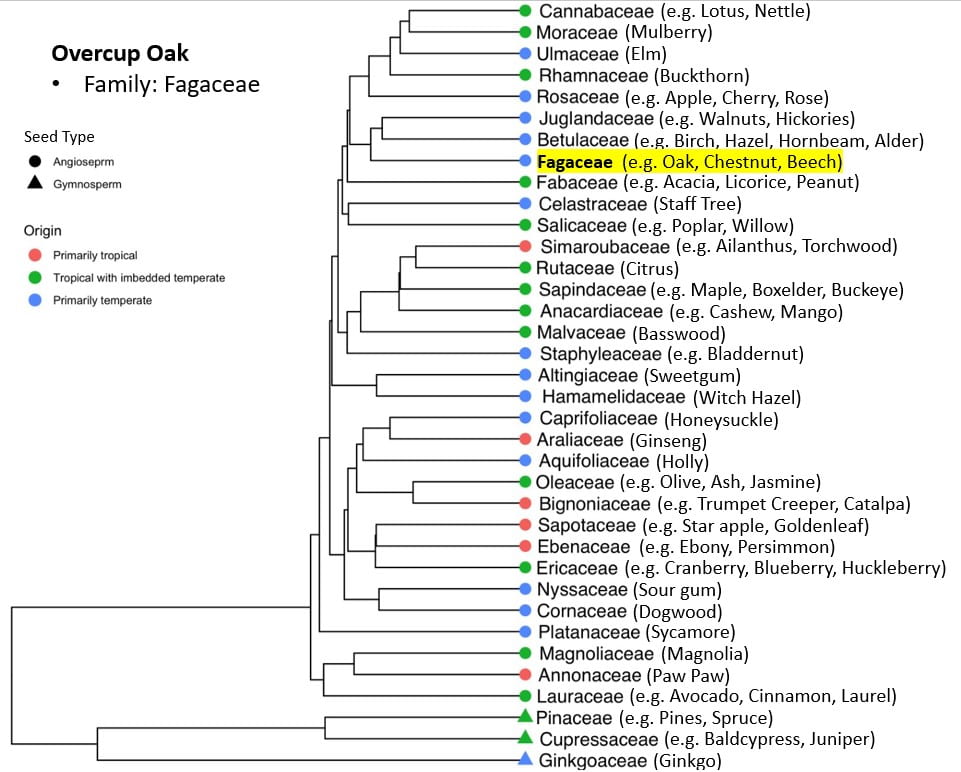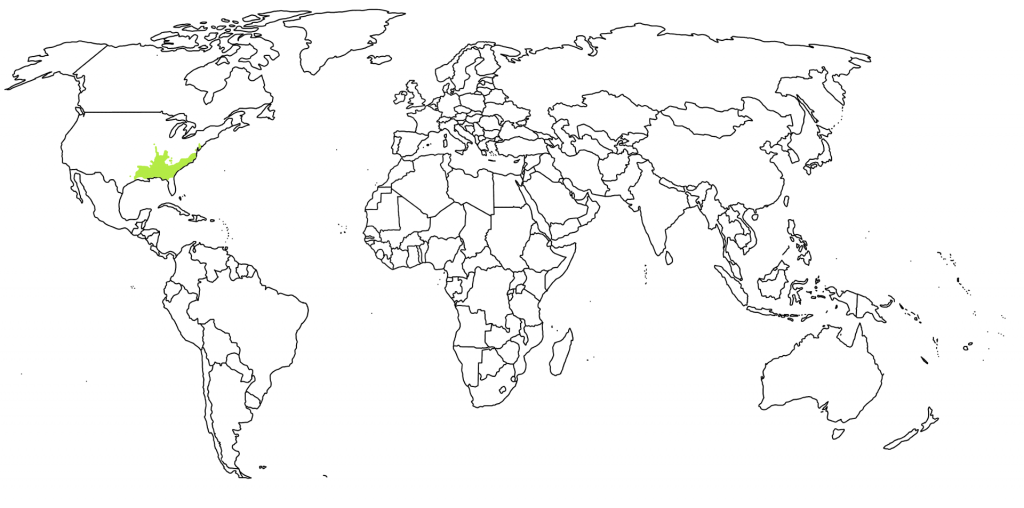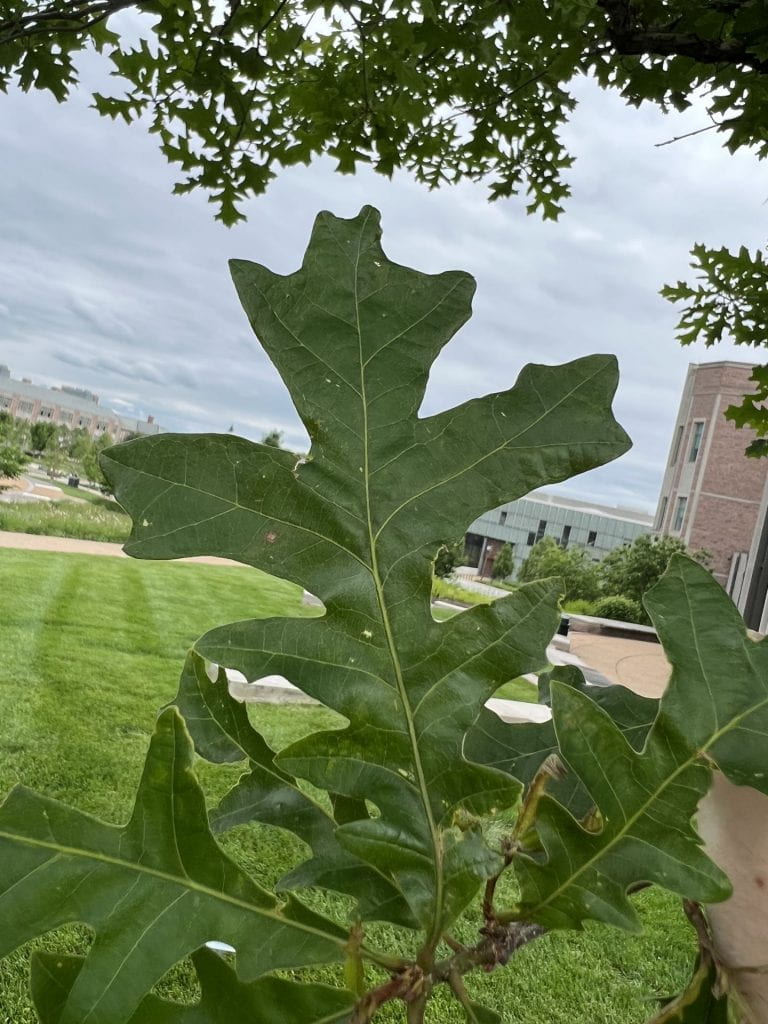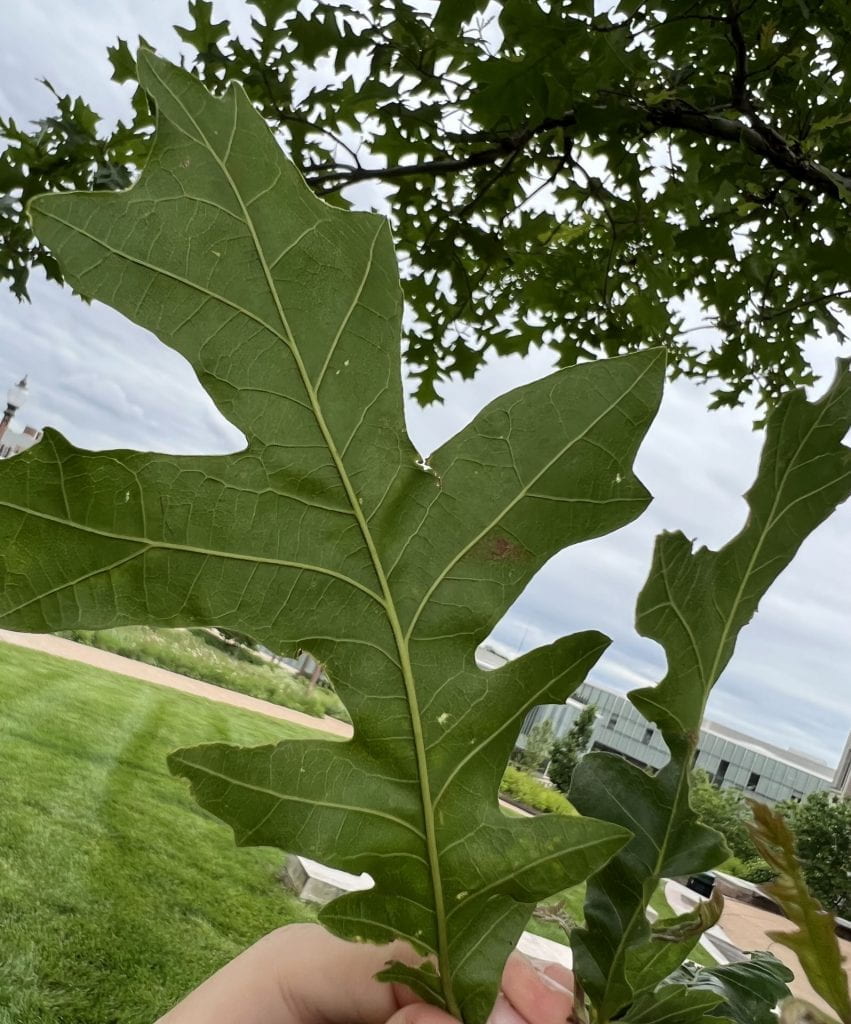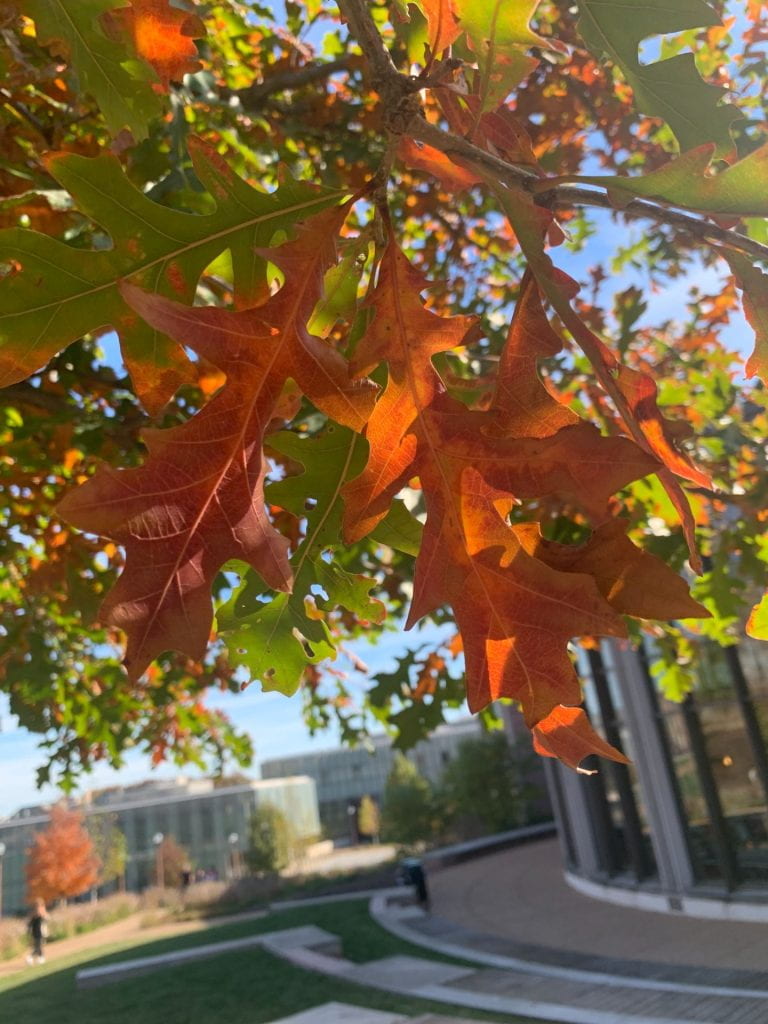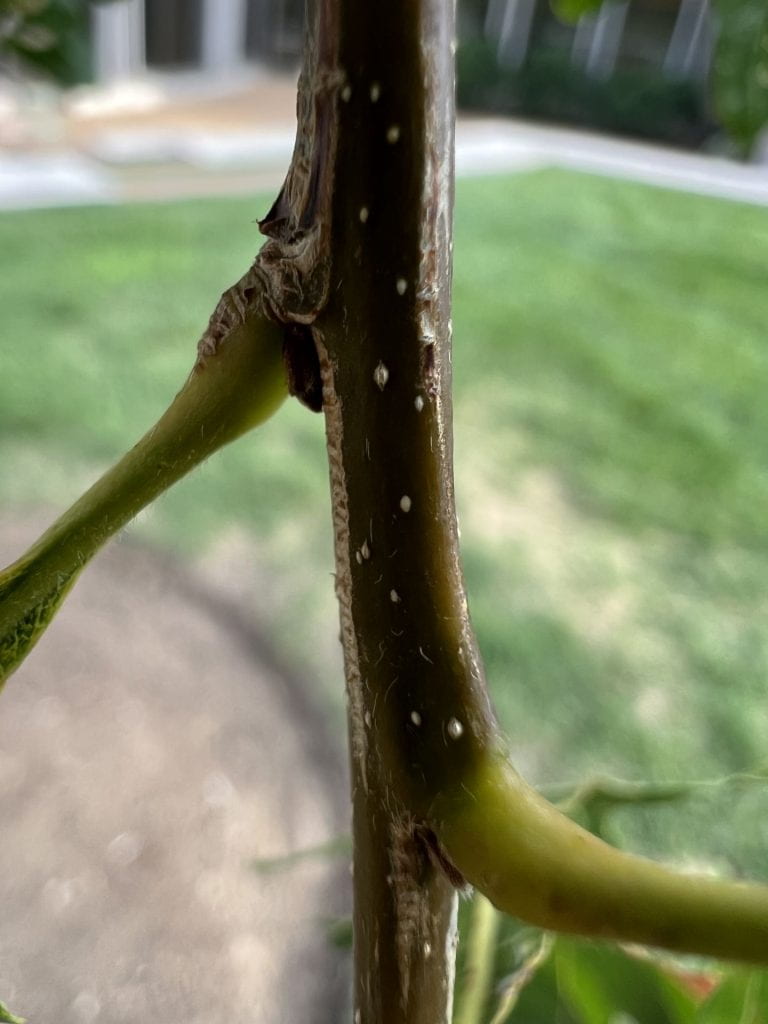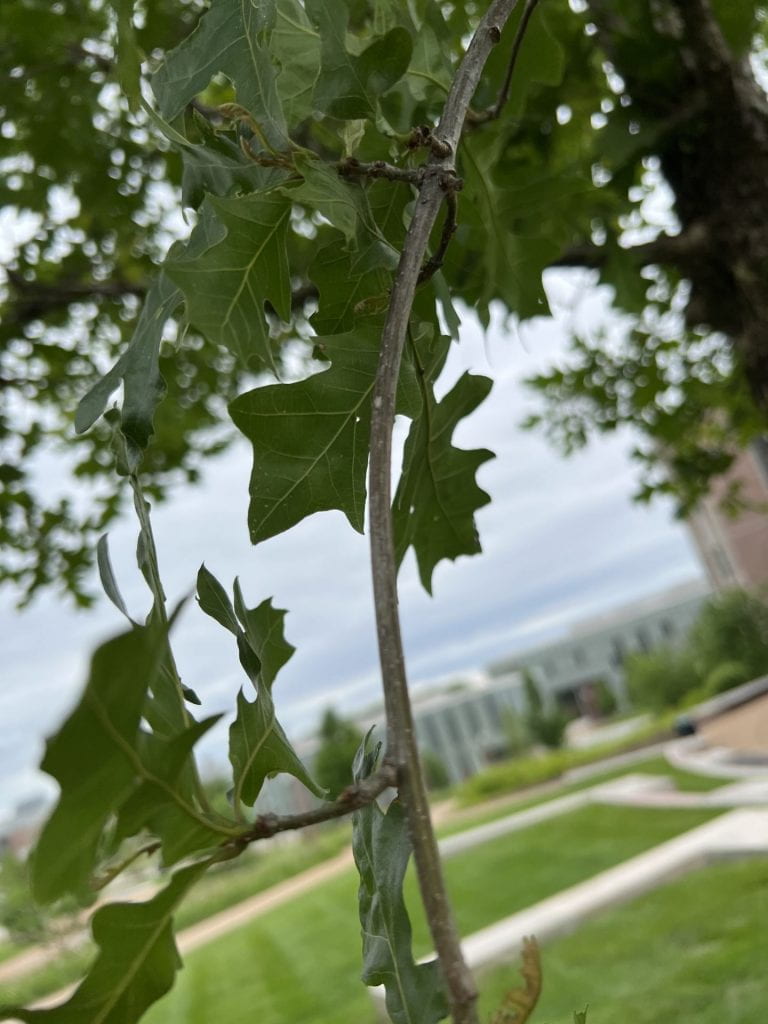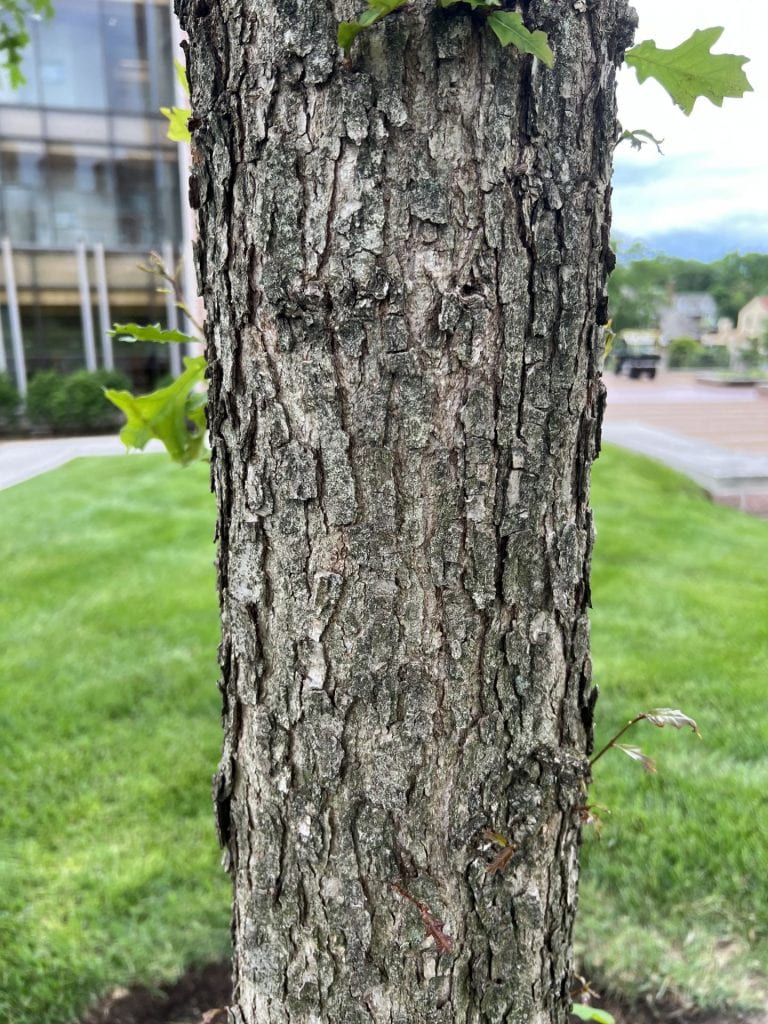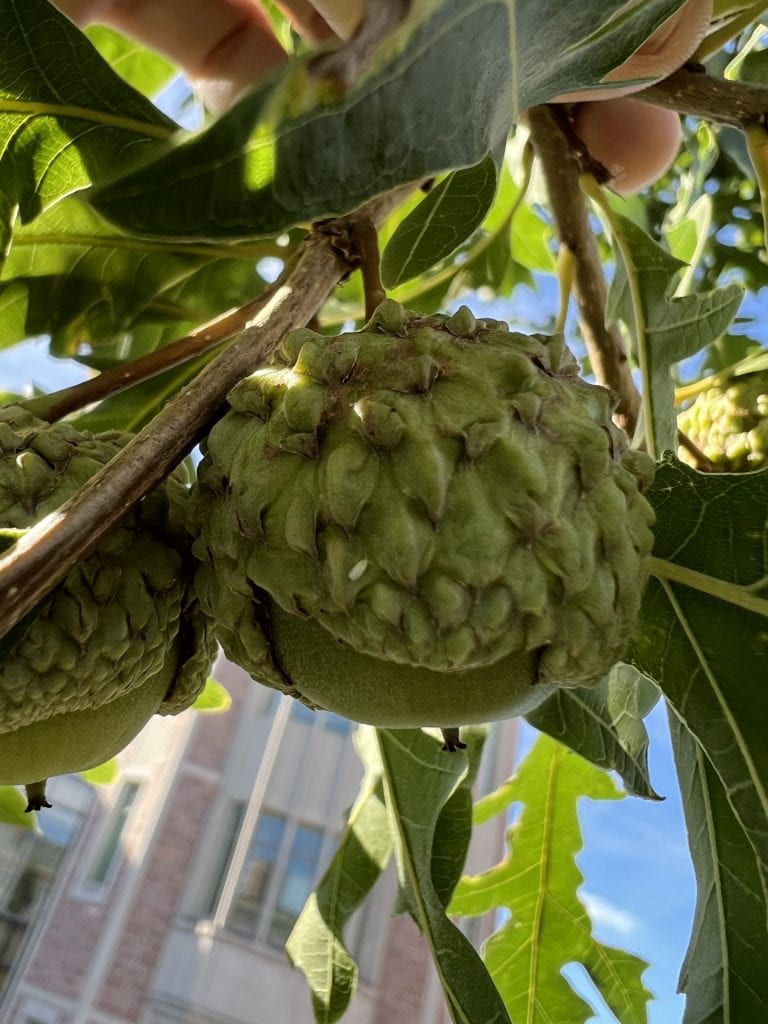Overcup Oak
Arbor Walk #56, TreeKeeper ID #2039

The Overcup Oak is native to Missouri and is a member of the white oak family. It is named for its acorn cup that covers the majority of its fruit. Though adaptable to most soils, the Overcup Oak, a Missouri native, is prevalent in the Southeastern US and in the Mississippi River Valley. In particular, the Overcup Oak is typically found in lowlands, floodplains, swamps and bayous. The second half of the Latin name, lyrata, means “lyre” which is most likely a reference to the shape of the leaves which are broad at the base and narrower at the tip, similar to the shape of a lyre.
The Overcup Oak is a member of the subgenus of white oaks. These oaks are distinguishable from other oaks from their smooth lobe tips (no awns), their hairless leaf undersides, and their lighter, flakier bark. The acorns of white oaks are also less tannic, meaning that they require less processing to become safe and palatable.

GPS Coordinates
N/A
Percent Concrete
N/A
Distance to Buildings
| Year | Close Building #1 | Close Building #2 | Close Building #3 |
|---|---|---|---|
| 2020 | Hillman Hall, 17.8 m | Brown Hall, 25.59 m | Busch Hall, 36.86 m |
Distance to Other Species
| Year | Close Species #1 | Close Species # 2 | Close Species # 3 |
|---|---|---|---|
| 2020 | American Hornbeam, 13.4 m | American Hornbeam, 14.36 m | American Hornbeam, 16.55 m |
Standard Measurements
| Year | Height (m) | DBH (cm) | Caliper (m) | Crown Diameter N-S (m) | Crown Diameter E-W (m) | Average Crown Diameter (m) |
|---|---|---|---|---|---|---|
| 2020 | 5.2086 | 10.9 | N/A | 2.9 | 3.26 | 3.08 |
| 2023 | 9.21 | 18.5 | N/A | 4.89 | 4.79 | 4.84 |
Nests and Pests
| Year | Description |
|---|---|
| 2020 | Thick layers of grey and green lichen, and dark green algae. Old wound with rotting on the inside. Irregular wound shape indicates healing issues. |
Leaf Identification
The leaves of the Overcup Oak are dark green, alternately arranged on the stem, simple (no compound leaflets), and have 7-11 blunt-tipped lobes with deep sinuses between the lobes. Typically, the first couple lobe pairs are much shorter, and the third pair of lobes are by far the widest, then shortening again at the leaf tip. This leads to the leaf having a kite-shaped outline. The leaves turn orange-red in fall.
Twig and Bud Identification
The twig matures from olive green to light brown, with light lenticels (pores) when younger. There are multiple terminal buds on the twig, which are golden brown and many-scaled.
Bark Identification
The bark is light gray-tan, with flaky vertical scales.
Fruit Identification
The fruit of the Overcup Oak is an acorn measuring 1/2″-1″ in diameter. The acorn can be identified by its extremely large cup, covering more of the acorn than any other oak. It is covered in thin scales. The acorns mature in fall.
Flower Identification
Like all oaks, the Overcup Oak is monoecious, with separate male and female flowers. The male flowers are in hanging yellow catkins (long, thin cluster of flowers), and the females are inconspicuous and red, in small clusters. The flowers bloom in early spring.
Oak ID Tips
- Compared to the Bur Oak, which is another white oak with a large-cupped acorn, the Overcup Oak has smaller acorns, and slightly smaller leaves. The acorns of the Overcup Oak do not have hairs along the cup fringe, while the Bur Oak does. Both oaks also have unique leaf shapes.
